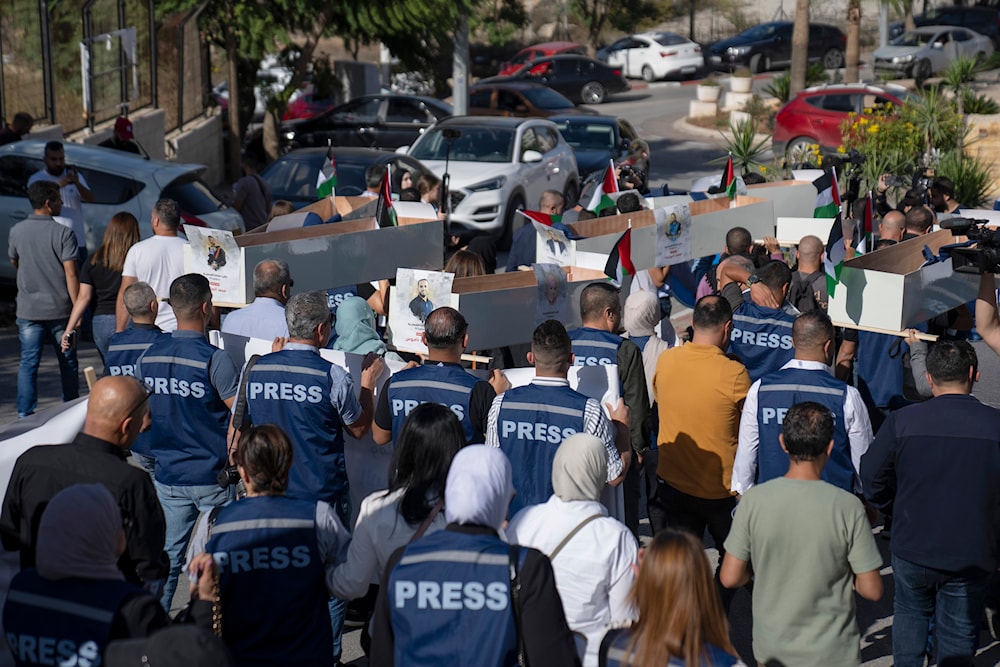'Israel' kills another journalist, bringing total to 121
An Israeli strike kills Palestinian journalist Issam al-Lulu, along with his wife and two sons
-

Palestinian journalists carry mock coffins of Palestinian journalists who were killed during the Israeli war in Gaza during a symbolic funeral toward a United Nations office, in the West Bank city of Ramallah, Tuesday, Nov. 7, 20 (AP)
The IOF murdered earlier today another Palestinian journalist via an Israeli airstrike on the Gaza Strip, bringing the total number of Palestinian journalists killed since October 7 to 121, Palestinian media reported.
Issam al-Lulu was targeted by Israeli warplanes in his home in al-Zawayda, the Palestinian news agency WAFA reported, adding that the attack also killed al-Lulu's wife and his two sons.
The onslaught of relentless air and ground attacks launched by the IOF since October 7 has killed more than 26,000 Palestinians, mostly women and children, displaced 85% of Gaza's population, and caused severe starvation.
The International Court of Justice, in its interim ruling in the genocide case filed by South Africa, ordered "Israel" to prevent acts of genocide in Gaza and allow access to needed basic services and humanitarian aid in Gaza as the occupation has been deliberately preventing aid entrance into the sieged Gaza.
The occupation also has to submit a report to the ICJ on all measures taken to give effect to this order within one month.
IOF: bloodiest hands in history
Al Mayadeen's correspondent in Gaza reported on the morning of January 26, on the 112th day of the Israeli aggression, that 11 Palestinians were martyred as a result of the occupation raids that targeted a house in al-Nuseirat camp in the central Gaza Strip.
Journalist Iyad Ahmed al-Rawag, a reporter and presenter on Al-Aqsa Voice Radio, died alongside members of his family after his house was targeted in al-Hasayna area in al-Nuseirat camp.
As for Khan Younis, south of the Gaza Strip, the occupation forces targeted the Nasser Medical Complex, and Quadcopter aircraft fired in its vicinity. On that note, our correspondent confirmed that the occupation forces destroyed a new residential neighborhood in the area, adding that 70 martyrs then had arrived at hospitals in the southern Gaza Strip.
Concerning the humanitarian and health crisis in Gaza, particularly in camps and displacement centers, the Palestinian Environmental Quality Authority has reported that 66% of the population in the Gaza Strip is grappling with water-borne diseases.

 2 Min Read
2 Min Read








